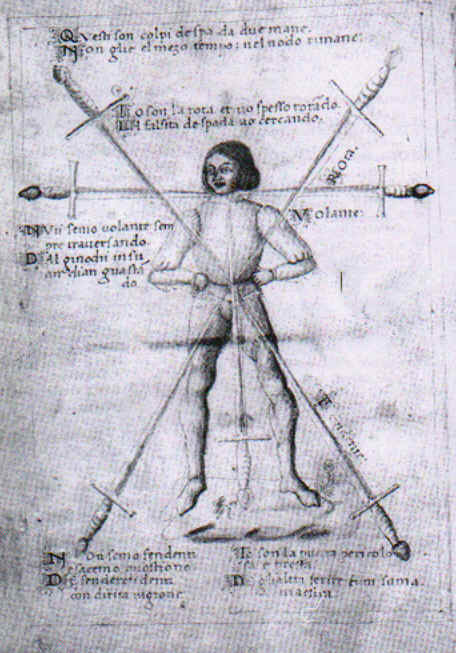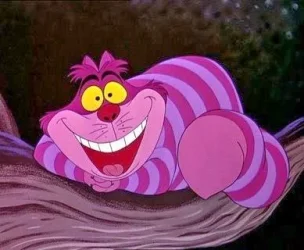Navigation
Install the app
How to install the app on iOS
Follow along with the video below to see how to install our site as a web app on your home screen.
Note: This feature may not be available in some browsers.
More options
Style variation
You are using an out of date browser. It may not display this or other websites correctly.
You should upgrade or use an alternative browser.
You should upgrade or use an alternative browser.
Explaining Kata/Forms to Those Who Don't Do Them
- Thread starter Koshiki
- Start date
TSDTexan
Master of Arts
TSDTexan
Master of Arts
TSDTexan
Master of Arts
This argument is usually accompanied by a case of special pleading.For example:
The Kalam Cosmological Argument as offered by
Dr. William Lane Craig
It may be formulated as follows:
1. Whatever begins to exist has a cause.
2. The universe began to exist.
3. Therefore, the universe has a cause.
(Therefore there is a Prime Mover.)
I assume the Chinese term is foreign to you as the Japanese terms is foreign to me.
Yes, I have done a little JKD but not enough to understand CMA ideas and terminology. I try, on discussions like this which encompass many styles not to use phrases that only mean something to my style and/or have only meaning to karateka.
Assuming people know what you are talking about when using phrases from your own specific style leads to misunderstandings and confusion as we can see!
lklawson
Grandmaster
Oh, the "gates."Open Door are open lines (unguarded) of attack to the body.
View attachment 19655
Getting someone's arm to move out of the way is opening a door/gate.



Peace favor your sword,
Kirk
TSDTexan
Master of Arts
Yes fencing also has observed the same thing.Oh, the "gates."



Peace favor your sword,
Kirk
I agree with some of what you said. In Parker Kenpo the first 4 forms are the "dictionary" forms for basics and excercise and aren't necessarily for specific attacks, although as you advance you will discover applications for those movements as well you should. All forms after that are fighting forms which teach principles of combat and are considered "encyclopedia" forms and contain graphed techniques from the system with some modifications. So aside from the given training elements they are a way to preserve information. That is why they should not be changed, there is so much info contained in them that by changing the forms your losing info from your system.Here's what I think would be cool in this thread. I don't presume to dictate the flow of conversation, but it would be interesting if members would post a description of their own view of forms and their use, in whatever style. Rather than a conversation on the subject, per se, but a focus on each individual's understanding. I realize people will have questions, comments, jokes, etc for each other, but a limit on long back and forth debate would be appreciated by me, at any rate.
That way, hopefully the thread will be a fascinating read through of well thought out perspectives, rather than a disorganzed conversation. I know that probably won't happen, but that's what I'm hoping for.
That said, here's my own understanding. I tried to keep it brief but, well, I'm bad at that. Please understand, this is my view, not the majority view, and not the correct view. Certainly not the best view. It's what works for me. It's why I personally finally changed my mind and decided kata were worth something.
-------------------------------------------------------------------
What kata is is pretty clear on the surface. It's a pattern of movements pertaining to combat against a single opponent, but performed as a solo practice routine. It looks a lot like dance. In many cases, it pretty much is dance.
What kata is for is a murky subject, however. For some it's performance art. For others it's exercise to strengthen the practitioner, develop their balance, and so on. Some people view it as a record of specific techniques to be used in certain situations.
However, the purpose for which I and others use kata is quite different from any of this. I've read many good descriptions that embody the way I personally view kata, but I htink many of them probably don't make sense if you don't already view kata in the way described, somewhat the way a really good description of the sound of train whistle would make sense to many of us, but would be utterly useless as a description given to one of us who is and has always been deaf.
Now, a couple things need to be said first.
1. Practicing a kata in the air, no matter how perfect your visualization, will not prepare you in any real way for actual combat.
2. The motions in a kata are not meant to be exact representations of specific applied techniques. The gross motions should be similar, but the practice of kata-derived application should largely be done with a partner, and is distinct from the movements in the solo form.
3. The bulk of kata practice should ideally be application with a partner, not solo air punching practice, though that has value as well.
Before I go any further, a disclaimer. My art is ostensibly Taekwondo, however it bears more resemblance to much of Karate than it does to much of Taekwondo. The kata I do are entirely found within Karate Styles, basically the Pinans/Heians, Naihanchi, and Bassai. We do none of the uniquely Korean forms. The versions we do, however, have been heavily Koreanized in many places. There are also parts of our forms where strikes have been added in that clearly read to me as though whoever added them didn't understand the potential of the original kata, and though it was blocking an opponent without countering, necessitating the strikes.
The point of this backstory is, my forms are often changed enough from the originals that whatever the original intent of a given kata was, it is now heavily obscured. The applications drawn from my Pion 2, sor example, are not going to largely correspond with those pulled from Shotokan's Heien Nidan, which in turn is going to have different potential from an Okinawan version of Pinan Shodan, none of which are probably comparable to whatever Channan entailed.
So if the kata don't really encode the specific techniques which can all be deciphered by a secret decoder ring, what's the point? I mean, really, couldn't we just use the Tango, or the Charleston, or contemporary ballet?
Well, actually, yes, you can. I have a close friend, practically family, who is an avid Belly Dancer, Kathak Dancer, and also plays with social dance styles. When she tries to get me to dance with her, she often complains that, "that step is not supposed to be a hip throw!" Can I help it if a dip is much like a take down?
The problem is, Kata don't necessarily look good, what they do is demonstrate powerful and natural movement styles of the body. Dance is designed to look good, sometimes at the expense of natural motion. One if form over function, the other is function over form.
In some places, yes there is obvious application, and most practitioners will arrive at similar results. Sometimes it's more muddied, and often it's completely, yes completely, up for interpretation.
This is about where those who don't practice Kata tend to really protest in earnest, "but then what's the point???"
This is also where I think many kata practitioners try to make kata out to be more than it really is. None of us know what the original applications of the older kata were, we all acknowledge that one interpretation can have as much validity as another, and we all acknowledge that most interpretations are likely not what the kata's creator intended, so really, it doesn't matter if there ever were any original applications, as long as the structure of the movement is sound. Again, these are my personal thoughts on kata, not everyone else's, not necessarily even anyone else's.
So again, what's the point?
I think what those who don't practice kata fully frequently misunderstand, is the purpose of kata. Kata is not a set of drills, and it's not intended to be. Also, it's of very limited use without the process of Bunkai.
That's right, process of Bunkai. An application that is derived from a kata is not "a Bunkai." Bunkai is the disassembly and analysis of kata. It is bunkai that separates kata from other drills, or from something like shadowboxing, or even from two man kata where both people have prescribed applications.
Kata and bunkai, a package deal, do not so much teach you Karate, as provide some structure to help yourself figure out karate. Even within just my own school, every long term practioner has a very different approach to fighting. One likes to grab and smash with elbows and body weight, simple, powerful techniques. Another likes small fluid movements, often in a psuedo-Aikido methodology of following the other person's movement, albeit much strike-ier than much of the Ueshiba stuff we usually see. Another is more of a sparrer, arms held close, largely parrying, absorbing, and striking back, any takedowns are usually sweeps. I'm fond of clinching and upright grappling mixed with close quarters striking. But we all learned from the same kata.
It must be understood that kata will not necessarily teach you good technique. It won't teach you how to do an armbar, or how to punch, or how to sweep. It will however, give you a framework for developing karate that works for you. Instead of an instructor giving you set combinations and applied techniques to practice, though this is necessary too, kata and bunkai enables you to find the combinations and applications that work for your body, for your experience, for your knowledge and skill, for your natural tendencies....
Now, certainly you can develop your own favored applications etc. on your own without kata, but kata forces you to decipher applications from motions you might otherwise ignore. It forces you to think creatively rather than habitually, it forces you to make sense of what might be senseless to you.
It forces you to explore uses for motion, at the most basic level, and in so doing you'll find thousands of potential applications. A majority of them will be crap. Many more will be possible but not practical. Of the small subset that are practical, many may not be suited to you in particular. A final group will be the applications that are the most suited for you. And occasionally, there's some stupid, impractical application that for whatever reason just really works for one specific individual.
Now, it's possible to do this same process of finding your ideal technique without kata, just learning applications. I don't argue that. However, that requires each instructor to learn, remember, and pass on those thousands of drills, most of which will be things he or she never uses, in the hopes that someday they'll just mesh for a person. Or, it requires the individual to just "come up" with all these possible approaches without the aid to inspiration afforded by kata.
But again, you can't learn, say, the nuance of a rear naked choke from a kata, generally speaking. However, once you learn the choke, you'll see opportunities for it all through your kata, you'll see new ways to thread it fluidly from and into other techniques, many of them counterintuitive. So can you learn upright grappling from a kata? No, not really, but once you know some upright grappling the kata constantly provides a basis for inspiration of new applications for the grappling you know. And yes, on occasion you'll just find something you never learned. I learned a hammer lock from our first kata long before I knew what a hammer-lock was, just because the kata forced me to play around with a motion that naturally led to it.
So, can you, for example, learn ground fighting from kata? No. Definitely not. At least, not in any efficient way. However, if you know some ground fighting, can kata provide a basis for counterintuitive ways to utilize what you've learned? Absolutely.
People complain that that's not karate, it wasn't in the kata, you didn't learn it from the form, you just reapplied what you learned elsewhere. Yes. 100%. Absolutely. That's the whole point of kata. You could make the same objection to any takedown, arm bar, wrist lock, punch, elbow strike or kick commonly associated ith karate. We didn't learn it from the kata. We just found it there after we learned it.
We don't learn the applications of karate techniques from kata, the kata doesn't teach them to us. The Kata doesn't teach us anything, it gives us a new way to look at what we already know.
Kata is a Metaphor.
Or more precisely, a metaphor is the best metaphor for kata. Now stay with me, I know that sounds fishy and spiritual and wishy washy and silly. But it's true, in a way. A metaphor doesn't teach you anything, it doesn't hold great truths in it, and it relies on you already being familiar with what the metaphor is metaphor-izing. The metaphor makes you look at what you know in a new light.
Take this metaphor. "Authority is a chair, it needs legs to stand up."
If you don't know a fair amount about authority already, comparing it to a chair is meaningless. You'll learn nothing. If you know something of authority, and force yourself to consider how it is like a chair, and how a chair represents authority, then in the process of contorting your knowledge of authority to fit a chair, you may arrive at a variety of new conclusions on the subject.
Let's take that last paragraph and replace the word "authority" with "technique," and the word "chair" with "kata." (other slight alterations necessary for the English to make sense)
If you don't know a fair amount about technique already, comparing it to a kata is meaningless. You'll learn nothing. If you know something of technique, and force yourself to consider how it is like the motions of a kata, and how a kata represents technique, then in the process of contorting your knowledge of technique to fit a kata, you may arrive at a variety of new conclusions on the subject.
Well, that escalated quickly.
Similar threads
- Replies
- 29
- Views
- 3K
- Replies
- 223
- Views
- 16K
- Replies
- 30
- Views
- 4K


